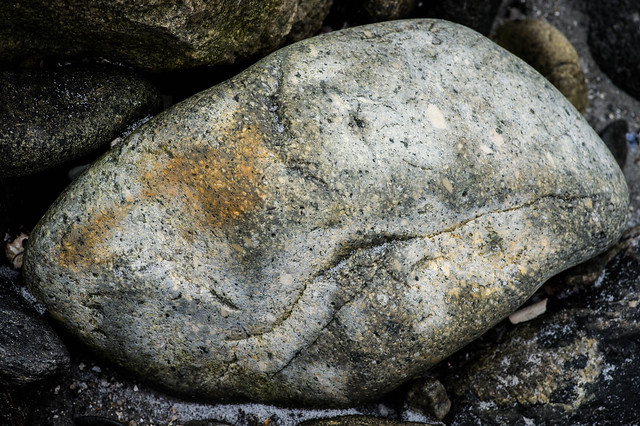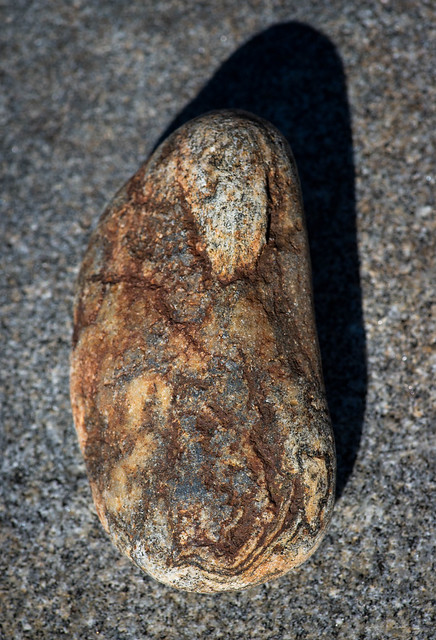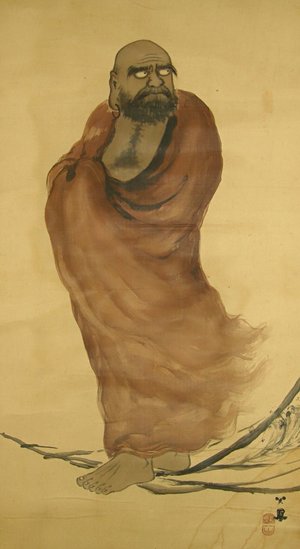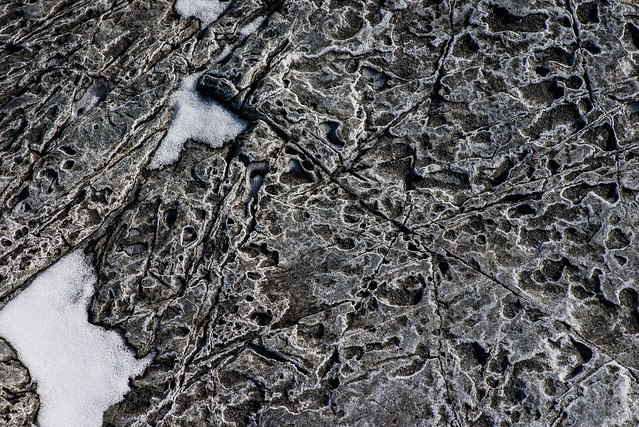

Perhaps the grand objective is to learn to savor such epiphanies, the passing moments of meaningful patterns, and to capture/celebrate them when and as one can. Collect especially appealing rocks. Weave them into stories and other constructions. Encourage the imagination, for that is where they dwell.
Art is very much about the imagination, about making representations of the Eye of Mind, and finding novel and personal ways to communicate what one sees . Most of my images have some narrative purpose, or seem to me to evoke stories of some sort, but generally the stories come from the images, or fit into some larger narrative project as exemplars (e.g., all those gravestones, or all those Abandoned Ancestors). Something prompts me to frame and click, and once I see the result in post-processing, a story may emerge that seems to explain something about the image.
And just a moment ago I tripped over a phrase that seemed especially apposite:
=====
This pair is an example of where visual memory plays a part. The rock reminded me of a photograph I took of Adrian Lewis in 1973, although I hadn't seen the photo itself in many years. It took some searching in the negative archive to find it:
Pursuit shows an apliqueed design, a lichen creation on a rock matrix:
Just lichen on rock. Just an interesting pattern that fit happily within the field of view of a 100mm macro lens, no obvious expository insight in the viewfinder. But as soon as I saw it on the computer screen, the notion of Pursuit couldn't be unseen: the figure on the left side, sharply defined by a line of white sketching its back, with an outstretched arm showing the direction of movement, is obviously being chased by the marvelously indistinct figure on the right, whose whitish feet (in the lower right corner) are clearly running... T'ang Dynasty, perhaps? Susurrus of silken robes? The art might be in the happenstance of lichen growth on granite substrate [not MY circus, not MY monkeys], or in the accident of my framing [definitely MY circus], or it might reside entirely in the post-hoc tale-making [positively MY monkeys]. It's difficult to imagine that a print of the image, matted and framed and hung on a gallery wall, would have any salience for viewers without the interpretation....and Wayang does the same:
What's referenced here is the domain of Javanese and Balinese shadow theater puppets, which are quite stylized but instantly recognizable to their audiences because of various cues in outline and ornament.
Sometimes there are Lessons in the rocks. One day I picked up a small rock that seemed especially characterful, so I set it on a flat granite surface and photographed it:

It wasn't until I was processing the image that I noticed that it was a portrait, and my first thought was "Zen Patriarch" since it reminded me of Japanese paintings I'd seen of those worthies. I wasn't immediately sure which Patriarch, but put that question aside to explore later.
I've lately been reading The Gateless Gate: the classic book of Zen koans, and yesterday morning arrived at Number 4:
The commentary explains that the koan has to do with the vexed and fundamental question of the distinction between the essential and the phenomenal, which bears directly upon what I've been trying to grasp in the case of rocks [relevant to the distinction between rock as an abstract and a rock as something with character and personality]. The "western barbarian" in the koan is often personified as Bodhidharma, the First Zen Patriarch, who was indeed an Indian monk who went to China in the 6th century:

So I realized that I wanted to find that rock with Bodhidharma on it; I wanted to possess it (I do have a modest collection of especially evocative rocks...). I went back to Drift Inn to try to find it again. And didn't. And went back twice more, trying to reconstruct where I might have tossed it. No Bodhidharma.
A haiku came to me, as haikus are wont to do:
The quick-witted will note that my Drift Inn beach Bodhidharma has no [evident, phenomenal] beard. Teisho's commentary on the koan includes this:
Pictures of Bodhidharma are well known, and not only does he always have a beard but a very thick beard indeed! Wakuan was well aware of this. Why then does he say that Bodhidharma has no beard?So here's what I was writing about rock before all the above happened:Everything has two aspects, phenomenal and essential. The phenomenal Bodhidharma has a beard, but the essential Bodhidharma has no beard. To realize this, you must grasp by experience the essential nature of Bodhidharma.
...
The essential nature [of anything] cannot be destroyed, even by karmic fire. If the whole universe were to be completely destroyed, the essential nature would continue to exist because it is empty. It is nonsubstantial. It cannot be seen with the eyes, heard with the ears, or touched with the hands. No one can identify the spot where it is.
The essence of rock is mineral, molecular, elemental, time-encapsulating, entropic [in the process of returning to its chemical origins], crystalline, cooled to a solid phase of a material derived from and still encapsulating its liquid phase.The essence of a rock, such as one might hold or photograph, is revealed via the phenomenal engagement with a mind: the mind discerns (makes, constructs) form. The mind of a geologist attaches labels and associations and temporal structure; the mind of a wall builder sees mass and shape and fit; the mind of a sculptor may see the form that dwells within; the mind of an artist abstracts and transforms the visual appearance of the rock...
===
This book traces a life-long engagement with rocks. In addition to relationships with specific named rocks (Plymouth Rock, Mount Monadnock), I note that I've been beguiled by
Objects are concealed from our view, not so much because they are out of the course of our visual way as because we do not bring our eyes and minds to bear upon them ... We cannot see anything until we are possessed with the idea of it, take it into our heads—and then we can hardly see anything else.
(Autumnal Tints 1862:173-174)
Many of my rock photographs are essentially portraits. The reality is that the subject is JUST a rock, but the viewer's imagination finds features (eyes, nose, mouth, etc.) evocative of a living being, and often projecting a distinct personality.

many of these are //remarkable and extremely ephemeral moments// in the lives of the rocks. Thus,

recognizing faces:
with many the rocks are so sculptural that it's difficult to imagine that they were not intentionally created:
some are In The Round, others are two-dimensional:

====